
![]()


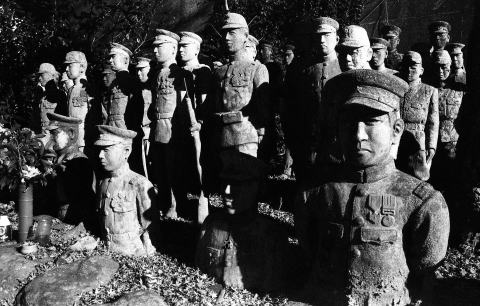
半田市赤レンガ 「機銃掃射跡」
愛知県名鉄観光の「半田 散策きっぷ」で紹介されている、横浜レンガ倉庫のような「半田赤レンガ建物」半田運河やレトロなビール工場などのキャッチフレーズにある、「半田赤レンガ(旧カブトビール工場)」は、横浜赤レンガ倉庫のように風情のある建物と丁度居合わせた大型バイクのマッチングもOK、ステキな雰囲気がある。
しかし、この赤レンガ建物の壁には太平洋戦争の傷跡が残っているのである。
Handa City Red Brick “Tracks of machine gun fire”
Aichi
Prefecture Meitetsu Tourism's ``Handa Stroll Ticket'' introduces the ``Handa
Red Brick Building,'' which resembles the Yokohama Brick Warehouse, and
catchphrases such as Handa Canal and a retro beer factory, and it is a quaint
building.
The
matching of large bikes that just happened to be together has a wonderful
atmosphere.
However,
the scars of the Pacific War remain on the walls of this red brick building.
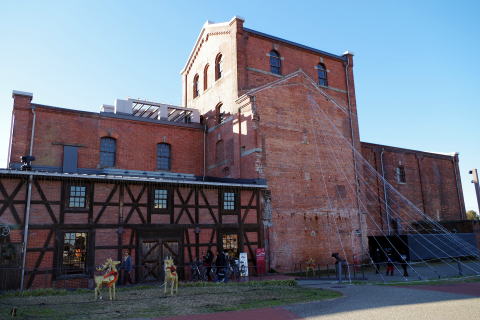
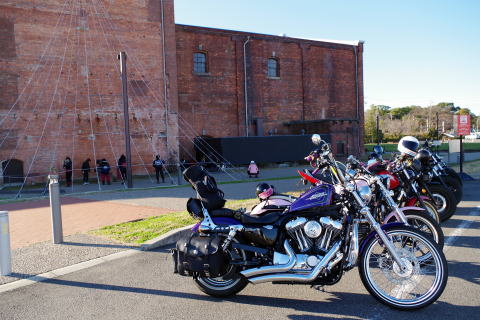
第二次世界大戦時における、愛知県半田市への本格的な空襲は、昭和20年(1945年)7月15日、硫黄島基地を発進した米軍のP51戦闘機10数機によって行われました。3機から6機編隊に分かれたP51が、三波にわたり、半田市上空に飛来し、超低空から攻撃を繰り返しました。
当時、中島飛行機の衣糧倉庫として使われていたこの「旧カブトビール工場」も激しく銃撃され、火災が発生し、一部が損傷しました。今もなお、その時の機銃掃射による多数の弾痕が北側壁面に残っています。全国でもまれな貴重な戦争遺跡であり、戦争の悲惨さを語り伝える役割を果たしています。(出典:赤レンガ説明板より)
A full-scale air raid on Handa City, Aichi Prefecture during
World War II was carried out on July 15, 1945, by more than ten U.S. military
P51 fighter planes that took off from Iwo Jima base. I did. P-51s, divided into
formations of three to six planes, flew over Handa City in three waves and
repeatedly attacked from extremely low altitudes.
They descended and strafed the city and surrounding areas,
resulting in eight civilian casualties.
At the time, the ``Old Kabuto Beer Factory,'' which was being
used as a clothing warehouse for Nakajima Aircraft, was also heavily shot, a
fire broke out, and some parts were damaged.
Even now, numerous bullet holes from the machine gun fire can
still be seen on the north wall. It is a valuable war ruin that is rare in
Japan, and plays a role in conveying the horrors of war. (Source: From the Red
Brick Explanation Board)
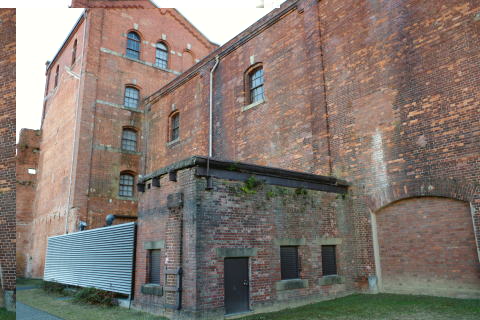
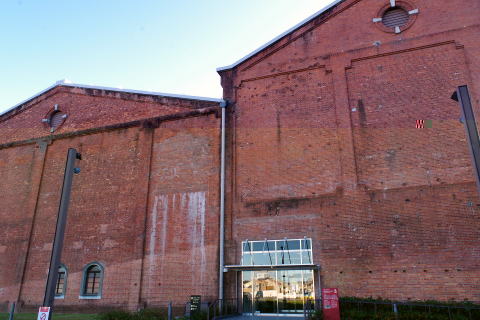
赤レンガは明治31年丸三麦酒株式会社の工場として竣工、その後昭和19年からは中島飛行機の衣糧倉庫として使用された。戦後いくつかの会社の手に渡ったが、現在は半田市が所有して年に数度の館内公開を行っている。

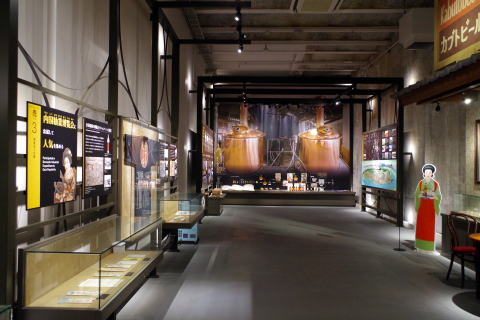

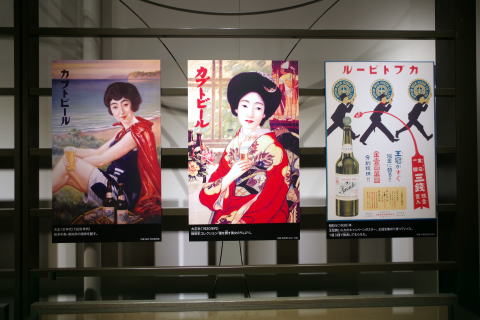
赤レンガ館内公開時に展示されていた半田機銃掃射についての中部日本新聞の記事では次のよう記載していた。
P51百機東海侵入 飛行場、市街地を銃撃の見出し「小火災を起こした程度で被害は軽微」とあるが、実際には死者8名を出していた
。
下の写真は
北面の機銃掃射跡に食い込んでいたP-51の実弾。右は原寸大の機銃弾イラスト。
The photo below is
P-51 live bullets stuck in the strafing marks on the north face.
On the right is a full-size machine gun illustration.
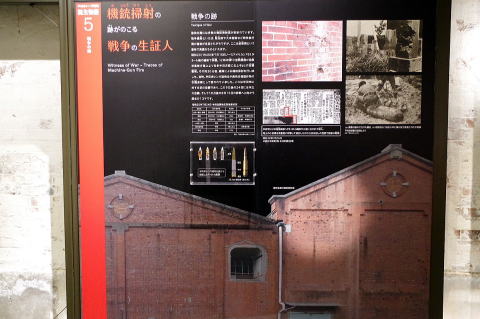
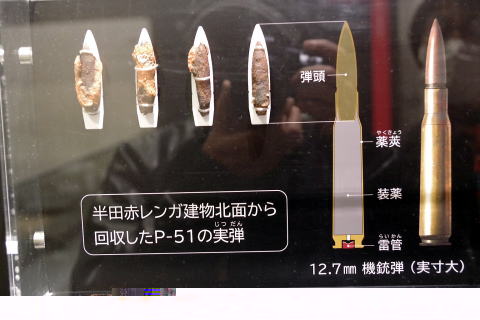
昭和19年7月15日の機銃掃射跡が残る赤レンガ北面。無数の弾痕が残る。
The red brick north face still bears the marks of a machine gun attack
on July 15, 1945. It leaves countless bullet holes
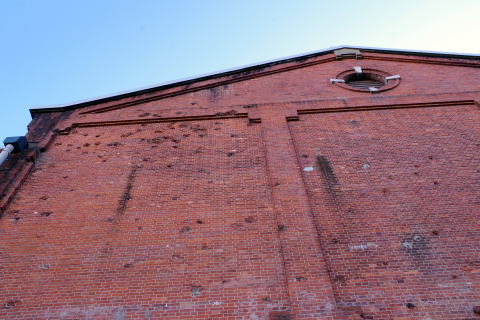

南知多町山海土間53の大慈山 中之院の「軍人像」
80年余り前に作られた92体の軍人像が、愛知県の南知多町にある山あいの天台宗大慈山の中之院に静かにたたずんでおり、大きさは様々であるがそのリアルさは凄い。
石像の多くは、1937年(昭和12年)8月に中国・上海の呉淞(ウースン)での上陸作戦で壊滅的な打撃を受け、命を落とした名古屋第3師団歩兵第6連隊に所属した兵士たちで、戦没した我が子を慰霊するため、遺族が戦没者の一時金をもって建立したものだ。生前の写真をもとに作られている為、表情は今でもリアルで、陸軍兵・海軍兵・飛行兵そして、勲章や軍刀なども写真のままに作られて、訪れる人の心に強く訴えている。
当時、呉淞(ウースン)での上陸作戦は、軍(国)の無謀な作戦とされ、犠牲になった兵士・家族たちの無念を感じる。そして、あらためて平和の尊さを感じると同時に、後世に伝えるべき軍人像であると思った。
この像は、それまで管理していた名古屋市千種区月が丘の寺が廃寺となり、行き場を失いかけていた為、1995年11月に、ここ天台宗大慈山 中之院が92体の像を引き取り現在に至っている。
“Soldier statue”
in Daijisan Nakano-in, Minamichita-machi Sankaidoma 53
Ninety-two military statues made over 80 years ago stand quietly
in the Nakano-in of the Tendai sect Daijisan in the mountains of Minamichita
Town, Aichi Prefecture, and although they vary in size, their realism is
amazing. .
Many of the stone statues belong to the 6th Infantry Regiment,
Nagoya 3rd Division, which suffered a devastating blow and lost its life during
the landing operation at Wusun in Shanghai, China in August 1937. It was built
by the bereaved families with the lump sum money of the fallen soldiers to
commemorate their children who died in the war. Because it was created based on
photographs taken during his lifetime, the facial expressions are still very
realistic, and the army soldiers, sailors, and airmen, as well as medals and
military swords, have been created exactly as they were photographed, and they
have a strong appeal to the hearts of visitors.
At the time, the landing operation at Wusun was considered a
reckless military operation, and one can feel the regret of the soldiers and their
families who lost their lives. I felt once again how precious peace is, and at
the same time, I thought that this is the image of a military man that should
be passed down to future generations.
The temple in Tsukigaoka, Chikusa Ward, Nagoya City that had
been in charge of these statues until then had been abandoned, and the statues
were about to have nowhere else to go, so in November 1995, the Tendai sect
Daijizan Nakano-in took over 92 of the statues and brought them to where they
are today.
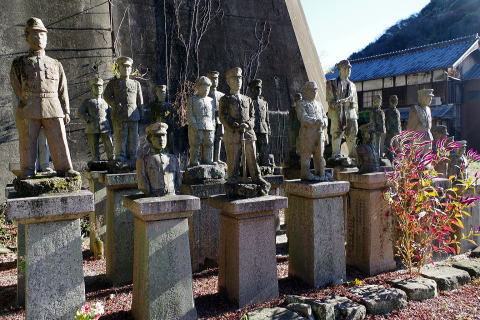
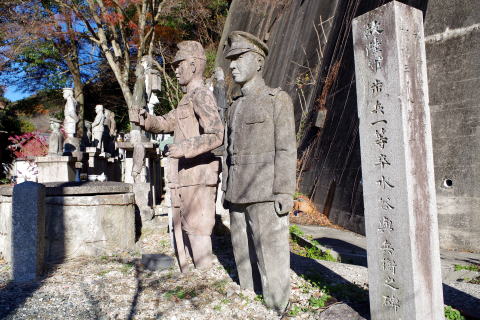
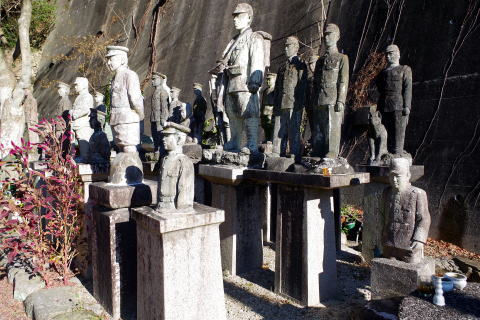
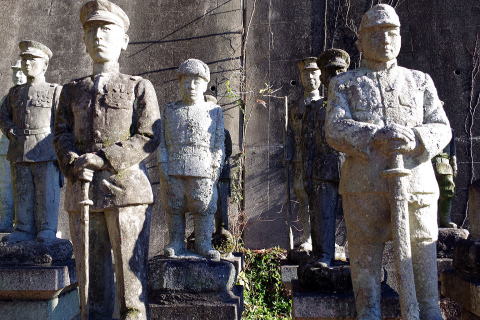
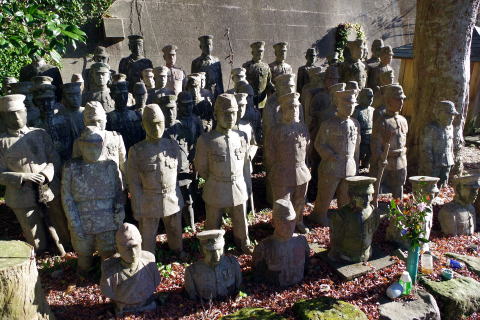



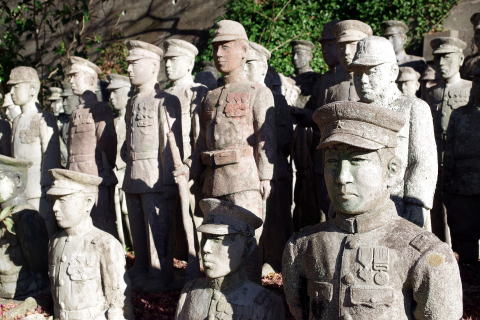



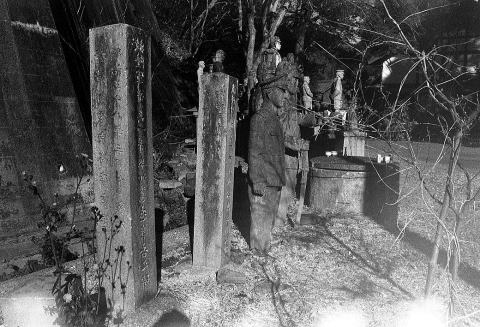
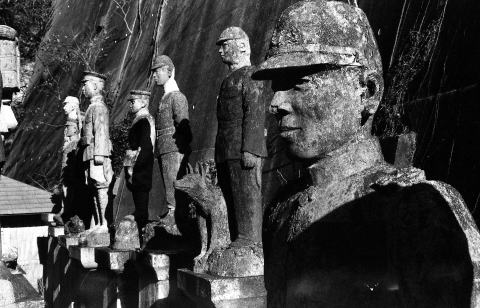
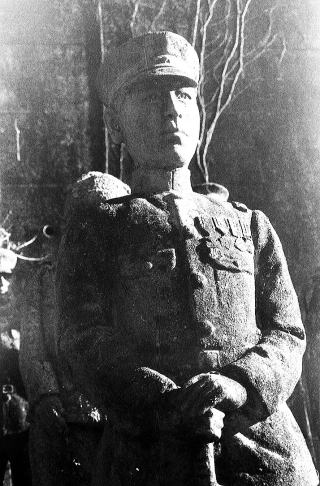

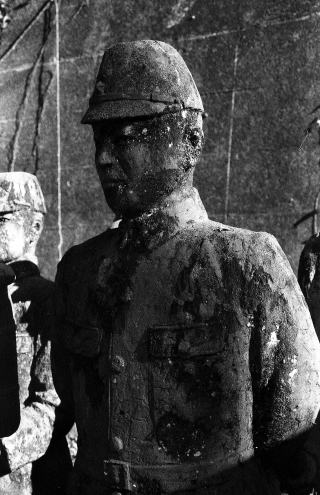
※資料
戦没者の慰霊をテーマに研究する愛知県護国神社資料編纂(へんさん)室研究員の元杭和則さんによると、1938年初頭、連隊長の倉永辰治陸軍少将ら3人の胸像が名古屋市千種区にあった大日寺(現在は廃寺)に完成。その後、遺族が遺族一時金を持ち寄り、我が子の慰霊のために像の制作を依頼した。1943年ごろまでに少なくとも108体が建立されたという。
「造形作家が寺に寝泊まりして制作」
大半が当時では珍しいコンクリートの立像で、作者は、岐阜県中津川市出身の造形作家浅野祥雲氏(1891〜1978)。元杭さんの調査では、軍人像の制作が追いつかず、浅野氏は寺の小屋で寝泊まりして制作するほどだった。 生前の写真をもとに作られた軍人像の大きさは、約50〜約180センチ。太平洋戦争の戦局が悪化してからはコンクリート像の柱となる金属が不足し、小さくなっていったという。(出典:朝日新聞)

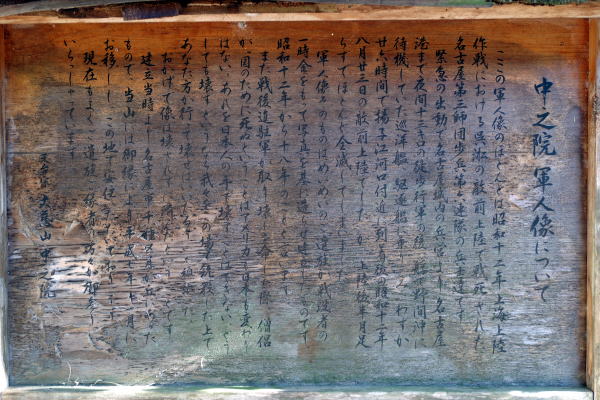
「銘板の文」
中之院軍人像について
ここの軍人像のほとんどは、昭和十二年上海上陸作戦における呉淞の敵前上陸で戦死された名古屋市第三師団歩兵第六連隊の兵士達です。
緊急の出動で名古屋城内の兵営より名古屋港まで夜間十三キロの徒歩行軍の後、船で野間沖に待機していた巡洋艦、駆逐艦に乗りこみ、わずか廿六時間で揚子江河口付近に到着後の昭和十二年八月廿三日の敵前上陸でしたが、上陸後半月足らずでほとんど全滅してしまいました。
軍人像そのものは、めいめいのご遺族が戦没者一時金をもって写真を基に造らせ建立したものです。
昭和十二年から十八年のことです。
また、戦後進駐軍が取り壊しを命じた際、僧侶が国のために死ぬということはアメリカも日本も変わりない。あれを日本人の手で壊すことはできない。どうしても取り壊すというなら我々をこの場で銃殺したうえで、あなた方が行って壊せばいいだろうと、頑張った。
おかげで像は壊されずに済んだということです。
建立当時より名古屋市千種区月が丘にあったもので、当山にはご縁により平成七年十一月にお移しし、この地で安住いただいております。
現在もご遺族ご縁者の方々がお参りにいらっしゃいます。
About military statues
Most of the military statues here are soldiers of the 6th Infantry Regiment,
3rd Division, Nagoya City, who were killed in the 1937 Shanghai Landings
when Wusun landed in front of the enemy.
After an
emergency dispatch, they marched 13 kilometers on foot at night from the
barracks in Nagoya Castle to Nagoya Port, boarded a cruiser and destroyer that
were waiting off the coast of Noma, and arrived near the mouth of the Yangtze
River in just 26 hours. They landed in front of the enemy on August 23, 1937, but
almost all of them were wiped out within half a month.
The
statues of the soldiers themselves were erected by the bereaved families of the
soldiers, using lump-sum funds from the war dead, based on photographs.
It was
from 1937 to 1942.
Also,
when the Occupation Forces order demolition after the war, monks die for their
country, which is the same in both the United States and Japan. Japanese people
cannot destroy that. I said that if you had to tear it down, you should just
shoot us here and then go and destroy it yourself, so I did my best.
Thanks to
this, the statue was not destroyed.
It was
located in Tsukigaoka, Chikusa Ward, Nagoya City from the time of its
construction, and due to good fortune, it was moved to this mountain in
November 1995, where it now resides.
Even now,
the bereaved family and relatives still come to visit.
Tendai
Buddhism Daijizan Nakano-in